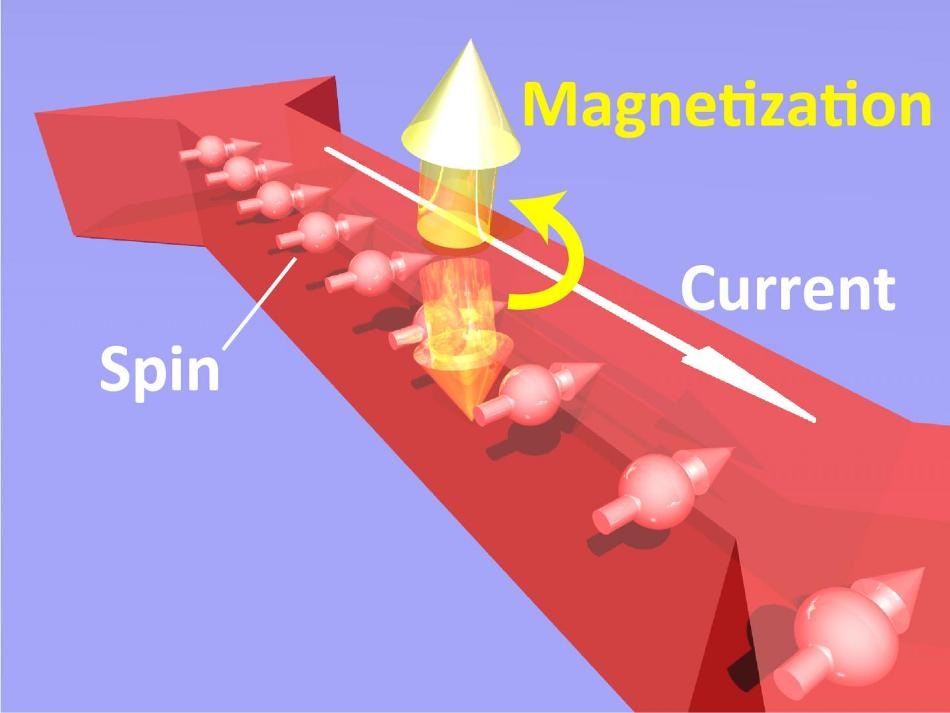Jun 14 2019
Scientists from the University of Tokyo have developed an electronic component that exhibits abilities and functions vital to future generations of computational logic and memory devices.
 This diagram shows how magnetization reverses in a GaMnAs crystal. (Image credit: © 2019 Tanaka-Ohya Laboratory)
This diagram shows how magnetization reverses in a GaMnAs crystal. (Image credit: © 2019 Tanaka-Ohya Laboratory)
Its power efficiency is about one to two orders of magnitude more than earlier efforts to develop a component with the same functions. This fact could enable it to achieve advancements in the evolving field of spintronics.
A keen technophile who intends to keep up to date with existing and future advancements in the field of computing might have come across the evolving field of spintronic devices. Put simply, spintronics investigates the potential of low-power, high-performance components for logic and memory. It is based on the concept of encoding information into the spin—a property associated with angular momentum—of an electron, instead of using packets of electrons to represent logical bits, 1s and 0s.
One method for unlocking the capabilities of spintronics is to be able to rapidly and efficiently magnetize materials. Professor Masaaki Tanaka from the University of Tokyo and his teammates have achieved a major advancement in this field. The researchers have developed a component—a thin film of ferromagnetic material.
The magnetization of this component can be completely reversed by applying very small current densities that are nearly one to two orders of magnitude smaller when compared to current densities necessitated by earlier methods. This fact makes the device much more efficient.
We are trying to solve the problem of the large power consumption required for magnetization reversal in magnetic memory devices. Our ferromagnetic semiconductor material—gallium manganese arsenide (GaMnAs)—is ideal for this task as it is a high-quality single crystal. Less ordered films have an undesirable tendency to flip electron spins. This is akin to resistance in electronic materials and it's the kind of inefficiency we try to reduce.
Masaaki Tanaka, Professor, University of Tokyo
The GaMnAs film used by the researchers for their experiment is unique in yet another way. It is specifically thin due to a fabrication process called molecular beam epitaxy. This technique enables devices to be built more easily compared to other similar experiments, which involve the use of multiple layers instead of single-layer thin films.
We did not expect that the magnetization can be reversed in this material with such a low current density; we were very surprised when we found this phenomenon. Our study will promote research of material development for more efficient magnetization reversal. And this in turn will help researchers realize promising developments in spintronics.
Masaaki Tanaka, Professor, University of Tokyo